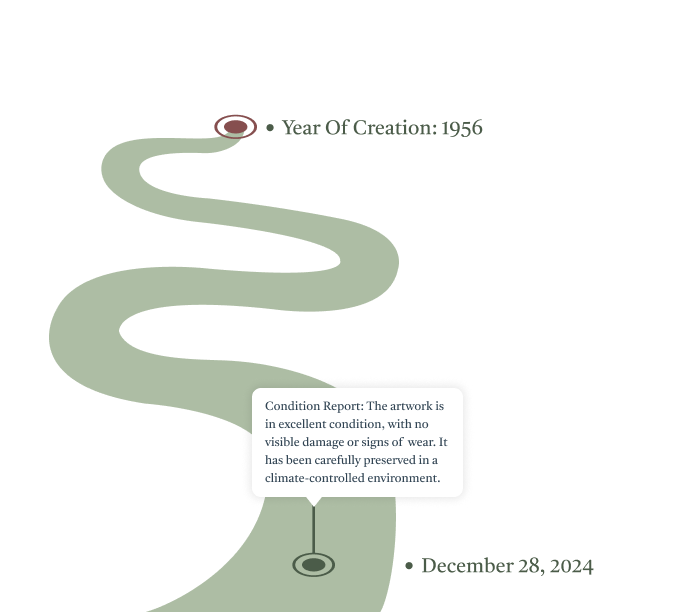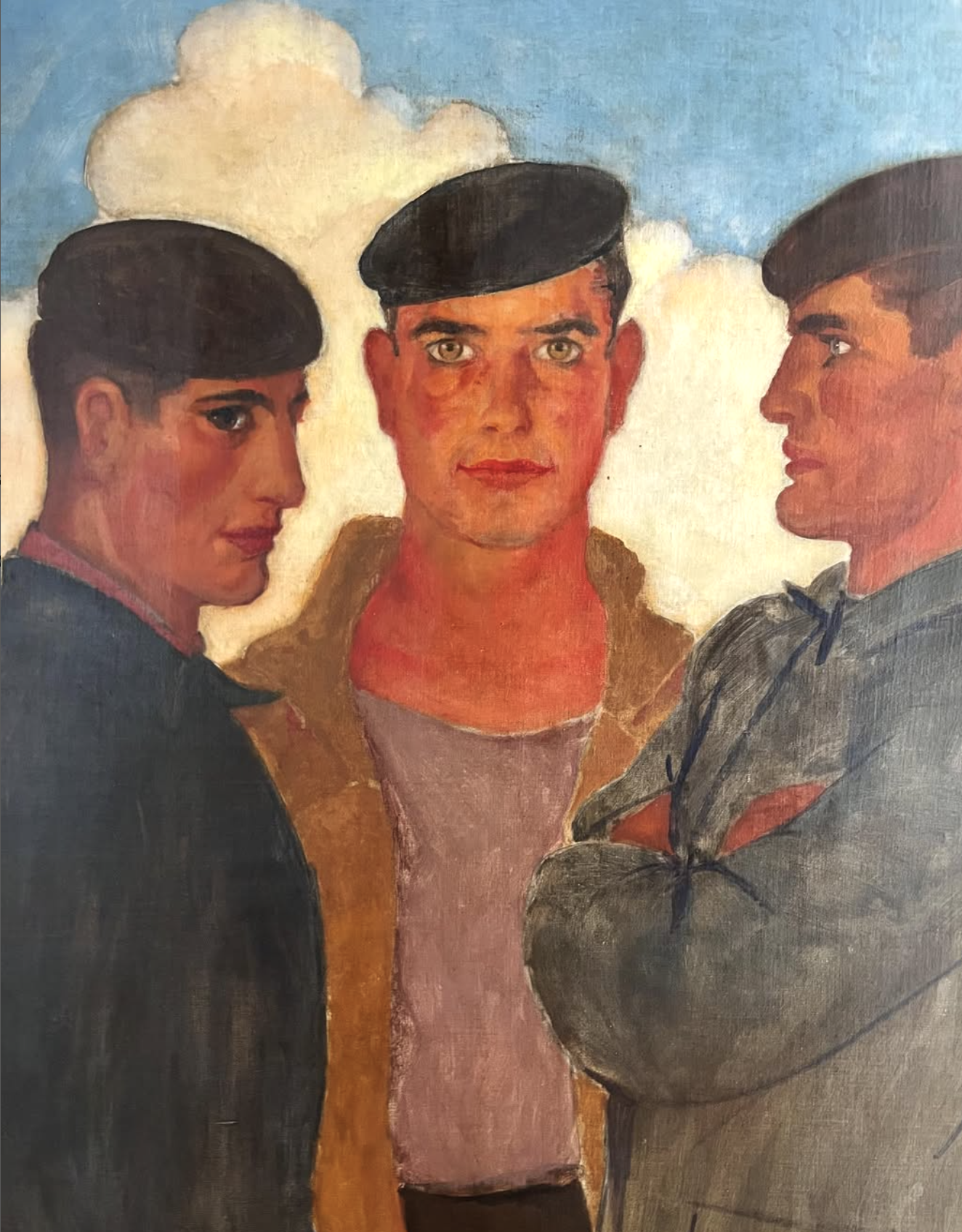
American painter and war artist best known for his haunting depictions of World War I. His work bridges realism and expressionism, capturing both the physical and psychological toll of conflict.
Often employed layered, textured brushwork to create depth and tension. His oil paintings reveal visible motion in each stroke, with muted tones interrupted by vivid highlights to express psychological contrast.
Three Basque sailors stand beneath an oil-soaked sky — youth, command, and shadow sharing one frame. The first glows in burnt yellows and oranges, his sharp gaze alive with defiance. Beside him, a stern officer folds his arms in authority. The third, half in darkness, seems drained of life, his eyes wandering beyond the canvas. Whether three men or one life divided into phases, their gazes bind them: still burning, yet turned away. Painted circa 1992 by Claggett Wilson (1887–1952), this unsigned 47” x 37” oil on canvas echoes the trauma and introspection of an artist shaped by war. A Princeton-educated painter and World War I Marine, Wilson witnessed the carnage at Belleau Wood, where more Marines died in one day than ever before. Wounded and gassed, he transformed his suffering into art — realism infused with pain, expressionism forged from memory. As critic Holland Cotter wrote, Wilson’s work reminds us that “art can’t be separated from politics.” Every brushstroke bears the sound, scent, and ache of war, immortalizing not just soldiers, but the cost of being human.
